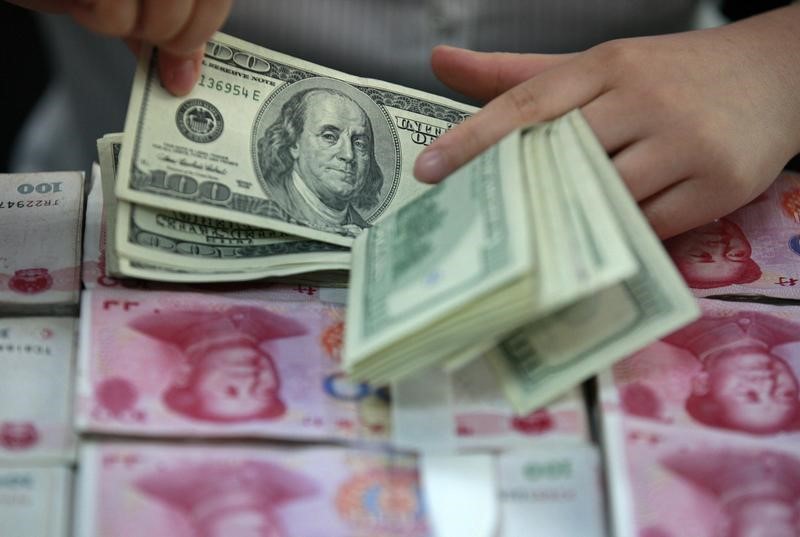Asian Currencies Muted Amid Dollar Strength and China Stimulus Disappointment
Asian currencies largely remained subdued on Friday as the US dollar gained ground in anticipation of the Federal Reserve’s upcoming interest rate decision. This cautious market sentiment was further exacerbated by the lack of substantial stimulus measures announced at China’s Central Economic Work Conference (CEWC), which dampened hopes for a boost to the Chinese economy and weighed on the yuan. Investors are holding back from major moves ahead of the Fed’s decision, where a 25 basis point rate cut is widely expected. However, uncertainty surrounding the longer-term trajectory of interest rates has tempered enthusiasm, lending support to the dollar.
The Chinese yuan faced downward pressure following the conclusion of the CEWC, which failed to deliver the aggressive stimulus measures that some market participants had hoped for. While China pledged to increase its budget deficit, expand debt issuance, and ease monetary policy to bolster economic growth amidst ongoing trade tensions with the United States, the announced measures were perceived as insufficient to address immediate economic challenges and counteract deflationary pressures. The yuan has been steadily weakening in recent months due to concerns about impending US tariffs under the incoming Trump administration, and this trend is expected to continue.
The US dollar is poised for its best week in over a month, despite expectations of a Fed rate cut next week. Stronger-than-expected producer price index (PPI) data and in-line consumer inflation figures for November have led markets to anticipate a slower pace of rate cuts in 2025. This shift in expectations has bolstered the dollar’s appeal.
Among Asian currencies, the Thai baht experienced the most significant decline, weakening by 0.8% against the US dollar. The Indonesian rupiah also depreciated, while the South Korean won edged slightly lower ahead of a parliamentary vote on the impeachment of President Yoon Suk Yeol. The Japanese yen also weakened as reports suggested the Bank of Japan is likely to maintain its current monetary policy stance, contrary to earlier expectations of a policy shift.
Elsewhere in the region, the Singapore dollar saw a marginal increase against the US dollar, while the Australian dollar remained largely unchanged. The Indian rupee held steady near its all-time high reached on Thursday. The overall subdued performance of Asian currencies reflects the prevailing market caution ahead of the Fed’s rate decision and the uncertainty surrounding China’s economic outlook.
The prevailing market sentiment suggests a cautious approach among investors as they await the Federal Reserve’s interest rate decision. The lack of substantial stimulus measures from China further contributes to this cautious outlook. This combination of factors, coupled with the dollar’s recent strength, creates a complex and dynamic environment for Asian currencies. The market’s response to the Fed’s decision and any subsequent policy announcements will be crucial in determining the near-term direction of these currencies. Furthermore, the ongoing trade tensions between the US and China continue to pose a significant risk to the stability of the region’s currencies.
Further Analysis and Outlook
The overall trend in Asian currencies reflects the complex interplay of global economic factors. The anticipated Fed rate cut, while widely expected, is not without its uncertainties. The market’s focus will be on the Fed’s forward guidance, specifically any indications about the future pace of rate cuts. A more dovish stance from the Fed could potentially weaken the dollar and provide some relief to Asian currencies.
China’s economic situation remains a key concern. While the government has pledged to support growth, the effectiveness of the announced measures remains to be seen. The ongoing trade dispute with the US adds another layer of complexity, with the potential for further escalation impacting market sentiment and currency valuations. The yuan’s performance will likely remain sensitive to developments in the trade negotiations.
Across the region, individual currencies face their own unique challenges. The political situation in South Korea, with the impending impeachment vote, adds to the uncertainty surrounding the won. The Bank of Japan’s decision to maintain its current policy stance, contrary to earlier expectations, could weigh on the yen.
The performance of Asian currencies in the coming weeks will depend on a number of factors, including the Fed’s decision, the evolving US-China trade relationship, and domestic economic developments within each country. Investors will be closely watching for any signs of further stimulus measures from China and assessing the impact of ongoing trade tensions. The interplay of these factors will shape the near-term outlook for Asian currencies.


